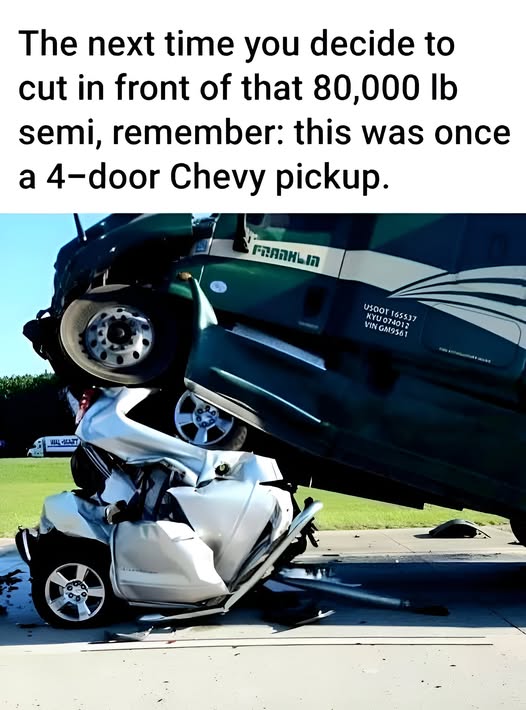
Please note: This is not legal or financial advice and should be used for entertainment purposes only. Consider a LegalShield Small Business plan as an option to save on your legal expenses.
Intro:
Whether you’re buying your first rig or adding to your fleet, purchasing a used truck can be a smart way to save money—if you know what to look for. Miss one major red flag, and that “good deal” could turn into a nightmare on wheels. Before you sign that dotted line, here’s a step-by-step guide to inspecting a used semi-truck like a pro.
1. Start with the Paperwork
Before getting greasy, get the paperwork in hand.
-
Maintenance Records: Look for consistency—oil changes, brake work, tire replacements, etc.
-
Accident History: Ask directly and check VIN reports (like CARFAX for commercial trucks).
-
Title & Ownership: Confirm it’s clean, lien-free, and matches the seller’s info.
-
Warranty or Lease Terms: If leasing, read the fine print—what’s covered, mileage limits, return conditions.
2. Visual Inspection: Body, Frame, and Cab
Do a thorough walk-around in daylight.
-
Rust & Corrosion: Especially on the frame, undercarriage, and near wheel wells.
-
Cracks or Repairs: Look at the frame rails for welds or bends—could signal prior damage.
-
Glass & Lights: Check for chips, cracks, foggy lenses, and working lights all around.
-
Suspension Sag: If one corner’s lower than the others, dig deeper.
- Loose Bolts: Indications – Visible movement between surfaces; Missing paint/rust; Shiny metal; Bare metal under a nut or washer
3. Under the Hood: Engine and Components
Pop the hood and take your time here.
-
Leaks: Oil, coolant, or fuel leaks around gaskets, hoses, and under the engine.
-
Belts & Hoses: Cracks, swelling, or dry rot are warning signs.
-
Fluids: Check color and levels of oil, coolant, brake fluid, and transmission fluid.
-
Battery & Wiring: Corroded terminals or messy wiring can point to poor maintenance.
- Battery Condition: Check the over all condition, including looking for signs like bulging or swollen battery cases
4. Tires, Brakes, and Axles
Safety and cost both start from the ground up.
-
Tread Wear: Uneven wear can signal alignment issues or suspension problems.
-
Will you need new tires soon? It is okay to buy a unit that will need tires – but factor that into the price you pay and your overall budget
-
Tread Depth: Inspect the thread all the way around each tire
-
Dry Rot: Look for dry rot inside and outside
-
Retread Caps: If retreads, check if the caps are starting to separate
- Tire Age: Check the manufacturing date to know the age of the tires
-
Brake Pads & Drums: Look for scoring, warping, or thinning pads.
-
Axles & Differentials: Check for leaks and listen for grinding when turning during a test drive.
5. Interior: Comfort Meets Clues
A truck’s cab tells you how it was treated.

-
Seat Condition: Excessive wear could mean high miles not shown on the odometer.
-
Gauges & Dash Lights: All should function properly. Watch for warning lights at start-up.
-
HVAC, Radio, and Power Options: Simple fixes add up if ignored.
6. Fire It Up: Engine Start and Idle
Turn the key and pay close attention.
-
Cold Start Behavior: Long cranking or rough idle = trouble.
-
Smoke Color: Blue (burning oil), white (coolant), black (fuel-rich)—none are good.
-
Idle RPMs and Noise: Engine should settle quickly and run smooth with no knocking.
7. Take It for a Test Drive
Don’t just drive it—test it.
-
Acceleration: Smooth, with no hesitation or delay.
-
Shifting: Automatic or manual, shifting should be smooth and not grind.
-
Steering Feel: No drifting, shaking, or play in the wheel.
-
Braking: Responsive and quiet, no pulling to one side.
8. Use a Mechanic You Trust
Even if you’re mechanically inclined, a second set of eyes is worth the cost.
-
A professional diesel mechanic can run a diagnostic scan and spot early warning signs you might miss.
-
Some dealers will allow (or even offer) a third-party inspection—take them up on it!
9. Ask the Right Questions
Don’t be afraid to push for answers.
-
Why are they selling?
-
How was the truck used—local runs or long-haul?
-
What’s the typical load weight it carried?
-
Any major repairs in the last 12 months?
Final Thoughts: Protect Your Investment
Used trucks can offer tremendous value—but only if they’ve been properly maintained and honestly represented. Always inspect with care, ask questions, and involve a professional when in doubt. A few extra hours upfront could save you thousands down the road.
See also related posts

- Advantages and Disadvantages of Leasing an Over-The-Road Truck
- Truck & Trailer Financing Traps to Avoid
- Buying New vs. Buying Used Class 8 Power Units: Pros and Cons
Have a used truck buying tip or horror story? Share it in the comments below or drop us a line at TruckStopReport.com!
Comments